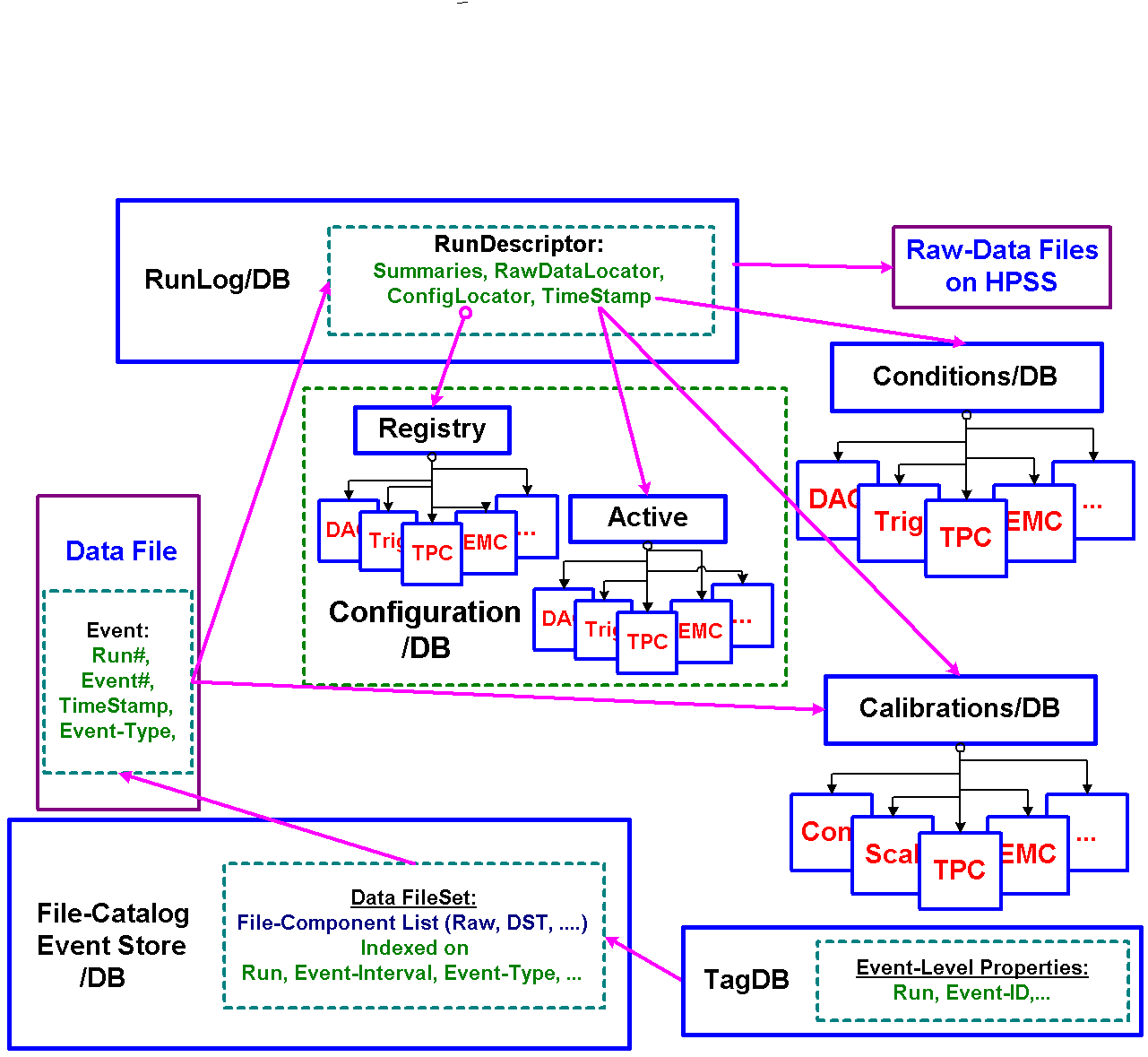|
TimeStamp
The TimeStamp that is stored both on the DAQ Raw data files and in the Database is the standard unix timestamp (unsigned int). The value is relative to the date, 1969-12-31 19:00:00 (unix-time=0), and has a unique range up to the date, 2037-12-31 23:59:59 (unix-time=2145934799). MySQL has a storage type called Date-Time for which the storage is unix-time while the display is done in the ascii string format noted here,
- "YEAR-MO-DY HR:MN:SE"
Both formats of the timestamp are supported in the C++ API such that if one
format is used to set the request or store times, the other format form is
filled immediately.
|
|
Version Name
The Version Name is a 128 char string (127+'\0') that identifies a particular version of data instances apart from any default version. In short, it is one of the primary keys associated with the lookup of database data. For example, two calls (below) prepare data for store (or request) the C++ API,
- StDbTable* mytable1 = myNode->addDbTable("aTableName");
- StDbTable* mytable2 = myNode->addDbTable("aTableName","aVersionName");
differ only in that subsequent "store" ("fetch") calls will write (retrieve) different versions of the table "aTableName".
|
